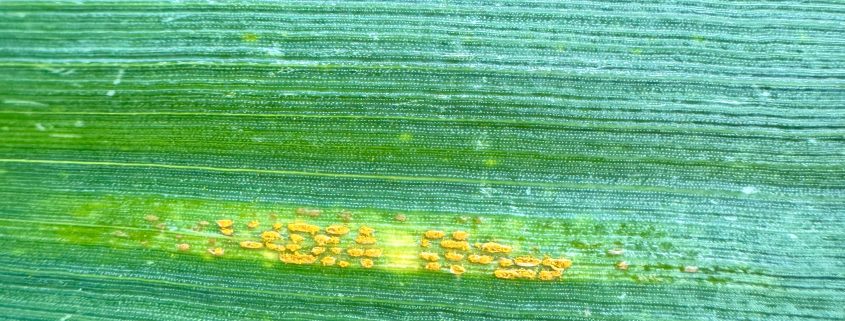Wisconsin Winter Wheat Disease Update – May 24, 2024
Damon Smith, Extension Field Crops Pathologist, Department of Plant Pathology, University of Wisconsin-Madison
Shawn Conley, Extension Soybean and Small Grains Agronomist, Department of Plant and Agroecosystem Sciences, University of Wisconsin-Madison
Winter wheat in Wisconsin continues to move through growth stage ahead of average. This week I have seen many wheat heads emerged and anthers out. We have also confirmed stripe rust (Fig. 1) in Columbia and Dodge Counties. Now is the time to make a decision on a fungicide application in winter wheat.
In my previous post I mentioned the importance of balancing both stripe rust and Fusarium head blight (FHB) as we moved into the next several weeks. Now that anthers are emerging on wheat heads, the time is right to get a fungicide application out to control FHB. These fungicides will also control stripe rust. You can find an excellent list of fungicides that will control both FHB and stripe rust HERE.
Given the current stripe rust movement into the state (Fig. 2) and potential risk for FHB to increase (Fig. 3), I think a fungicide should be strongly considered to protect yield in winter wheat this season. I realize that the Fusarium risk tool is still showing much of Wisconsin in a low risk of FHB. However, with stripe rust moving in at this point and the rainy weather, choosing an FHB fungicide to apply now at anthesis is a wise decision in my opinion. The optimal timing of application of fungicide at this point in the season is the start of anthesis (50% of heads showing at least one anther) to 7 days after the start of anthesis. This will maximize control of FHB while also providing control of stripe rust and the mycotoxin deoxynivalenol (DON).
As always, be sure to get out in the field and scout, scout, scout! Making an informed decision is key to success!








